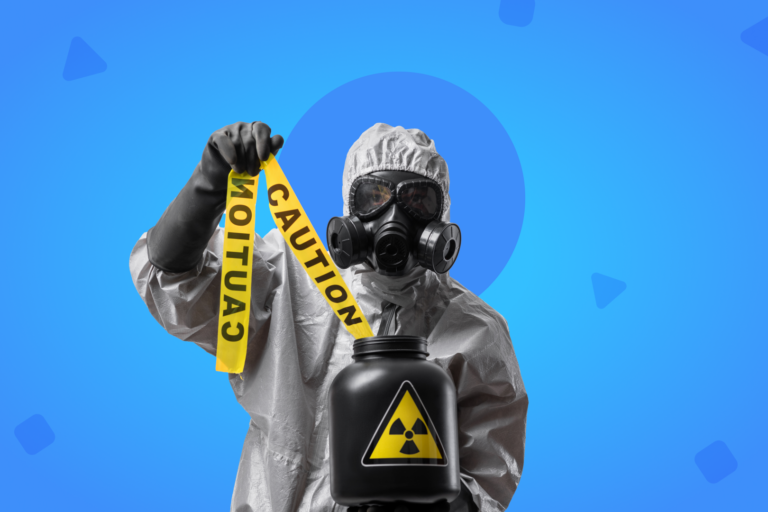The maintenance and handling of electrical equipment requires high levels of safety. And in work environments, efforts to avoid incidents related to electricity are fundamental, since they involve contact with medium and high voltage lines that increase dangers, since they expose workers even to the risk of death.
For this reason, electrical safety occupies an outstanding place when preparing risk prevention planning, since any deficiency in this aspect generates vulnerabilities that can cause serious accidents or cost the lives of workers.
The importance of electrical safety
A study by the Superintendency of Electricity and Fuels (SEC) revealed that the average of fatal electrical accidents in work environments in Chile between 2007 and 2013 reached 11%. A considerably lower figure than deaths associated with exposure to mechanical forces (31%), falls (29%) or other external causes (18%).
These numbers confirm that working in contact with electricity can be very safe, although workers must be prepared to identify and deal with the danger involved in handling or maintaining electrical installations, lines or equipment.
Companies must recognize the importance of this issue, as a poorly prepared workforce, without adequate training or experience, and without the ability to recognize potential hazards can lead to electric shock or other electricity-related incidents that can cost their lives or cause severe injury to the people who work on them.
Risk group
Electricity is present in practically all industrial sectors and areas of activity within a company, regardless of its field. From equipment and electrical connections, wiring and plugs to machinery, they are powered by electricity.
From the simple operation of a computer to tasks such as electrical installations and repairs, the testing of equipment and accessories, inspection and maintenance activities require strict protocols where safety must be present to protect the integrity of the workers. For that reason, from office personnel to technicians who are in the field are exposed to the threat of an incident and are considered a risk group that requires attention to protect them accordingly.
Electrical Hazards and Electrical Safety Tips
The risk of electrocution is one of the most common when it comes to electricity. Therefore, identifying electrical hazards is critical to help raise awareness of them, their severity, and the harm they can cause to workers.
Here are some of the most common electrical hazards and what to do to reduce them:
Manipulation of damaged tools and equipment
Normally, workers are exposed to the use or manipulation of tools and equipment that can present some damage and that require some type of maintenance. To prevent them from becoming high risk items, they must be carefully reviewed.
Improper wiring and overloaded circuits
In many electrical installations unsuitable cables are used, which creates risks due to potential overheating and, consequently, fires. That is why it is essential that the wiring is carried out with the correct cables and frequent fire risk assessments are carried out to identify sources of danger and take measures to correct them in time.
Improper grounding
The most common OSHA electrical violation is improper equipment grounding. Proper grounding can eliminate unwanted voltage and reduce the risk of electrocution. Never remove the metal ground pin as it is responsible for returning unwanted voltage to ground.
Damage to insulating material
There are surfaces that serve the function of isolating the electrical current and, with wear or bad handling, they are damaged and become a hazard. To carry out maintenance or repairs, the power must be cut off and, under no circumstances, covered with insulating tape.
Humidity conditions
Moisture is one of the worst enemies of electricity. Therefore, never operate electrical equipment in humid places, since the risk of electrocution increases exponentially, even more so if the equipment or installation in question is not maintained or is damaged. If an electrical problem is suspected, perform a qualified technical inspection to correct and repair the issue before reconnecting to the power grid.
High-voltage network
There are lines with high voltages that threaten workers with severe burns or even death from electrocution. Prevention in these cases begins by maintaining a minimum distance of 3 meters, not storing anything under any high voltage power line and putting up barriers and signs that clearly warn that it is a dangerous area.
Safety team: a key factor
Tools that have insulation and the elements that make up personal protective equipment (PPE), such as insulating gloves, mats and ladders, are essential to protect workers who are exposed to the dangers that electricity generates.
These items should be used when performing work such as electrical tests, repairs, installations or maintenance, among others.
Management areas
Electrical safety is a sensitive topic that covers a large number of aspects, so carrying out a successful management requires considering a series of areas, among which we highlight:
- Electrical safety measures of the place
- Work near high voltage power lines
- Review of sources and causes of electric shock
- Safe behaviors and improvement of electrical safety controls
- Identification and elimination of the most common electrical hazards
- Emergency and first aid procedures in case of electrical accidents
- Evaluation and learning of previous electrical incidents
How to optimize electrical inspections?
When it comes to preventing, evaluating and resolving risk situations in terms of electrical safety, inspections are an unavoidable aspect, which requires a high technical level, periodicity, among other characteristics.
The volume of information is usually very large, so the industry is increasingly turning to technological solutions that solve both this problem and the question of time, which is a key factor for the productivity and efficiency of maintenance operations.
Today there is a considerable amount of software and applications to carry out these technical inspections. Some are even tailor-made, according to the specific needs of each company, allowing greater speed, better communication between the different areas involved and more efficient work processes and more effective reporting.
What used to be done on paper, today is done through mobile devices, allowing you to upload forms with their respective guidelines, enter and process data and images that are then immediately uploaded to the cloud, from the workplace, without delays and share that information with other areas of the company.
If it is about facilitating, organizing and optimizing work in electrical safety, the digital resource of this type of application is a fundamental advantage that successful companies are taking today and are already the future in terms of efficiency and competitiveness when it comes to of the safety of the workers in a subject as sensitive as the protection against electrical accidents.






